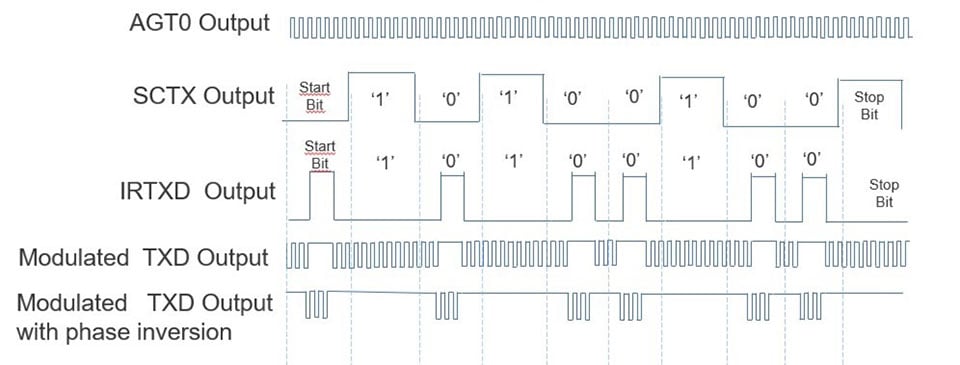Many of today's low-power applications require a simple, short-range method of contactless communications, without a cable. This way of contactless communication can be used for configuration or data collection, but the added cost and complexity of a radio link is not preferred.
An infrared communications link is often the best solution and can be found in many different products, such as utility meters, wearables, and remote controls. However, implementing such a link on a typical microcontroller is not so easy. To avoid saturating the IR diode, we typically want to drive the diode with a low-frequency signal, and then this has to be modulated by the communications data, which typically means an external modem chip is used. With its associated cost, we tend to generate a low-frequency signal with a timer and use some external components to mix this with the output of a serial port. This not only uses external components, but we also need to use several I/O pins for each of these functions.
In this blog, we'll look how we can use the SCI/AGT gate function to mix the output of the RA4C1 microcontroller's Asynchronous General-Purpose Timer (AGT) with the output of SCI5 or the on-chip IrDA interface, to easily generate the signal required to efficiently drive an infrared diode without the need for external components or an excessive number of I/O pins.
The RA4C1 is a low-power microcontroller (MCU), supporting up to 80MHz operation that can operate from voltages down to 1.6V. The device has many low-power peripherals such as low-power timers, low-power UARTs, and a segment LCD controller. The RA4C1 is the first product of the RA MCU family with the SCI-AGT mask circuit implemented to make it easy to drive IR diodes, as you can see in the circuit diagram below.

The circuit is very simple in operation. Users can use the output of SCI5 to modulate the carrier frequency generated by the AGT timer, as shown in the diagram below. This can then be used to directly drive the IR diode.

Users can also choose to use the output of the IrDA circuit on the RA4C1 to modulate the carrier. You can choose to either output the direct modulated output or use the output with phase inversion, as shown in the diagram below.

This simple circuit makes it much easier for the users to generate the signals required to send information across an infrared interface, reducing the additional components required on the PCB and reducing the number of pins on the MCU for such a function.
Learn more about the RA4C1, including more details about the operation of the SCI-AGT mask function at www.renesas.com/ra4c1.
